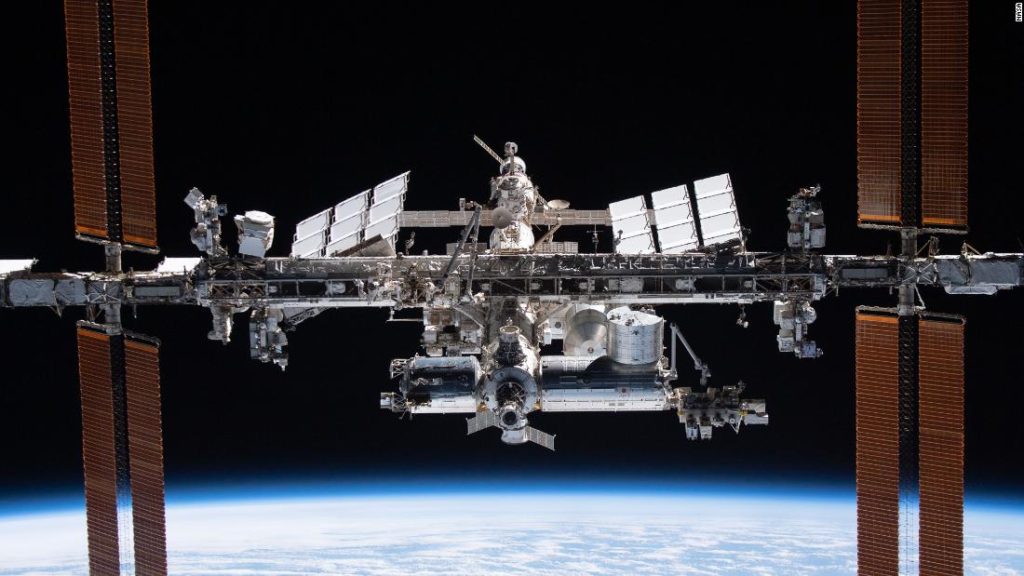The space station will join Russia’s Mir and NASA’s Skylab fragments in the uninhabited South Pacific, home to more than 263 pieces of intentional space debris.
Furthermore, by understanding the ways in which astronauts have used space and the instruments on the space station, this input can be used to design future spacecraft and habitats while exploring the Moon and Mars.
first of its kind
The first archaeological study conducted outside Earth was The brainchild of Justin St. P. Walsh, associate professor of art history and archeology at Chapman University in California, and Alice Gorman, associate professor in the School of Humanities, Arts and Social Sciences at Flinders University in Australia. They began the creative process of looking at the space station from an archaeological perspective in December 2015.
With the help of the International Space Station’s National Laboratory’s Center for the Advancement of Science in Space and implementing partner Axiom Space, Walsh and Gorman were finally able to see the first step of their investigation become a reality this year.
“The International Space Station is an important site for the development of humanity living in space,” Walsh said. “If this was a site on the ground, we would do everything we could to preserve it. But that’s not technically possible, so the next thing archaeologists do, like when sites get flooded because of a dam, for example, document everything we can about the site, These documents and any samples shall be kept for future generations.
The project began on the space station in January. The experiment, called the Quadrilateral Aggregations Research Experiment, or SQuARE, is a simple one.
Archaeologists often create a test pit at an important site, dividing it into a grid of squares for excavation purposes.
However, the layers of the space station cannot be excavated – or have scientists squeezed in to conduct a study.
Astronauts placed 3-foot (1 meter) strip squares on walls throughout the space station and photographed them every day for 60 days to show how these areas change over time.
The results can simulate the way soil layers preserve different moments in time at archaeological sites.
The boxes were placed on the kitchen table where the crew ate, across from the toilet, a workstation and two different science stations, as well as a place of choice for the crew. The six sites capture what everyday life looks like in zero gravity.
Documenting a slice of life in space
Heritage sites are often thought of as places of historical significance on Earth — but they are also found in space, Gorman said.
The Apollo moon landing sites are a prime example, and as we leave human and robotic footprints in places like Mars, those places of interest will spread.
“No one has collected such data before, so we don’t have it for Mir and Skylab,” Gorman said.
“Space Archeology with SQuARES. Using a ruler and color chart, we document the use and changes of selected areas on the #ISS to help design future spaceships and habitats,” Maurer wrote in his tweet.
It can be especially useful when trying to determine where to place what Gorman refers to as “gravity surrogates,” or the bungee cords, clips, and self-tapping strips essential to life in the absence of gravity.
“We would expect to find aspects of adapting to life in this kind of environment that no one knew about before,” Gorman said.
“If you’re an archaeologist excavating a long Viking house, you might have ideas about what works and what doesn’t, but don’t have the opportunity to knock on a Viking door and say, ‘Hey, I’ have some ideas here for how to design your next little village. But we have this opportunity.”
future meeting
The SQuARE trial will conclude on March 22nd. When the crew, including NASA astronauts Kayla Barron, Raja Chari, Thomas Marshburn and Mark Vande Hey, return to Earth this spring, the researchers will get a chance to speak with them.
Gorman Walsh envisions a series of six additional experiments if they get the funding.
Other experiences include recording the space station’s acoustic environment and documenting the search for privacy in a small habitat, something that can come in handy as crews prepare to experience time on the much smaller portal that will orbit between the Moon and Earth as a supporting axis. Moon exploration.
In turn, the lessons learned by Gorman Walsh from their first experience aboard the space station can be applied to remote sites on Earth, such as the artifacts left on Mount Everest decades after people climbed to its summit.
“This could be the beginning of different kinds of archaeology that we could see in the future,” Gorman said.

“Amateur organizer. Wannabe beer evangelist. General web fan. Certified internet ninja. Avid reader.”




/cdn.vox-cdn.com/uploads/chorus_asset/file/25550621/voultar_snes2.jpg)


More Stories
Watch a Massive X-Class Solar Explosion From a Sunspot Facing Earth (Video)
New Study Challenges Mantle Oxidation Theory
The theory says that complex life on Earth may be much older than previously thought.